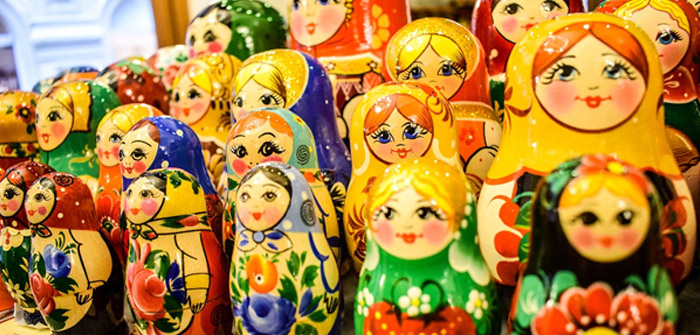Babushka dolls, also known as Matryoshka dolls, are one of the most iconic symbols of Russian culture, recognised worldwide for their unique design and rich heritage. These nested dolls have captivated the hearts and imaginations of people for over a century, embodying a fascinating history and evolving symbolism that continues to charm collectors and enthusiasts alike.
Origins of Matryoshka Dolls
The origin of Matryoshka dolls can be traced back to the late 19th Century in Russia, a period marked by a burgeoning interest in traditional crafts and folk art. The first Matryoshka doll set was created in 1890 by Vasily Zvyozdochkin, a craftsman at the Children’s Education Workshop in Abramtsevo, and was painted by the artist Sergei Malyutin. The inspiration for these dolls is believed to have come from a set of Japanese nesting dolls representing the Seven Gods of Fortune, which had found their way to Russia.
The name “Matryoshka” is derived from “Matryona”, a popular female name at the time, which itself originates from the Latin word “mater”, meaning mother. This connection underscores the dolls’ symbolism of fertility, motherhood, and family, with each doll nesting within a larger one, much like generations within a family.
Evolution in Design
From their inception, Matryoshka dolls have undergone significant evolution in design. The early dolls typically depicted a robust peasant woman dressed in a traditional sarafan (a Russian folk dress) and holding a rooster or other domestic items. Over time, the designs began to diversify, incorporating various themes, including fairy tales, historical figures, political leaders, and even modern celebrities.
The intricate artistry involved in creating Matryoshka dolls has also evolved. Early dolls were hand-painted with natural pigments, showcasing simple, yet expressive features. As techniques and materials advanced, the dolls became more elaborate, with detailed costumes, complex facial expressions, and vibrant colours. Some contemporary artists have even experimented with abstract and avant-garde styles, pushing the boundaries of traditional Matryoshka art.
Symbolism and Cultural Significance
Beyond their aesthetic appeal, Matryoshka dolls hold deep cultural and symbolic significance. Each set of dolls, with its decreasing sizes, represents the concept of infinity, unity, and the matriarchal structure of the family. They symbolise the nurturing aspect of motherhood, encapsulating the idea of a mother embracing her children within her care.
In Soviet times, Matryoshka dolls took on additional layers of meaning. They were used as political commentary, with each nested doll often representing different figures within the government or social hierarchy. This period saw the proliferation of politically themed Matryoshkas, making them a subtle medium for satire and expression.
Today, Matryoshka dolls continue to be cherished as both cultural artifacts and modern art pieces. They are a popular souvenir for tourists and a beloved keepsake for collectors. Their timeless appeal lies in their ability to adapt and reflect contemporary themes while maintaining their traditional roots.
Where to Find Babushka Dolls Today
For those interested in owning a piece of this rich cultural heritage, it’s now easier than ever to buy babushka dolls online. A variety of styles and themes are available, ranging from classic designs to modern interpretations, ensuring that there is a perfect set for every collector.
The history of Babushka dolls is a testament to the enduring allure of these charming nested figures. From their origins in 19th-Century Russia to their evolution into contemporary art forms, Matryoshka dolls continue to symbolise family, tradition, and cultural identity. Whether as a collector’s item or a heartfelt gift, these dolls remain a beloved emblem of Russian artistry and heritage.




